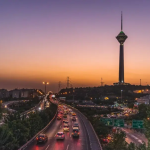The Ganjali Khan Complex is a historic site located in Kerman, southeastern Iran. Built during the Safavid era in the 17th century, it is considered one of the most remarkable and well-preserved historical sites in Iran. The complex includes a bazaar, a caravanserai, a mosque, a water reservoir, a mint, and a school, among other facilities. Each building is a masterpiece of Persian architecture, engineering, and design, and reflects the artistic and cultural traditions of the Safavid dynasty. In this article, we will journey through the magnificent Ganjali Khan Complex and explore its many treasures.
A brief history of the Ganjali Khan Complex
The complex was commissioned by Ganjali Khan, a powerful governor of Kerman who was appointed by Shah Abbas I, the greatest Safavid king. Ganjali Khan was a patron of the arts and sciences and commissioned many works of art and architecture throughout Kerman. The Ganjali Khan Complex was designed by a team of master architects and craftsmen, who created a stunning ensemble of buildings and courtyards. Each building was designed with great care and attention to detail, and the complex as a whole was a testament to the artistry and engineering skills of its creators.
Exploring the Ganjali Khan Complex
The Ganjali Khan Complex covers an area of over 11,000 square meters and is designed around a central courtyard, which is surrounded by a series of interconnected buildings and arcades. Visitors can spend hours exploring the complex and admiring its many features.
The bazaar
The bazaar of the Ganjali Khan Complex is one of the largest and most well-preserved bazaars in Iran. It is a vibrant and bustling marketplace, where visitors can wander through the winding alleys and haggle with the friendly shopkeepers for unique souvenirs and gifts. The bazaar is home to hundreds of shops and stalls, selling a wide range of goods, including textiles, handicrafts, spices, and sweets.
The caravanserai
The caravanserai of the Ganjali Khan Complex was an important stop along the Silk Road, the ancient trade route that connected Asia and Europe. Today, the caravanserai has been converted into the Kerman University of Art and Architecture, where students study art and architecture in a beautiful, historic setting. The caravanserai is a large courtyard surrounded by a series of rooms and arcades, where travelers and their animals could rest and refresh themselves during their long journeys.
The mosques
The mosque of the Ganj Ali Khan Complex is a beautiful example of Safavid-era architecture, with a large prayer hall and a stunning dome. The mosque is decorated with intricate tilework and calligraphy, creating a serene and peaceful atmosphere for worship.
The bathhouse
The bathhouse of the Ganjali Khan Complex is considered one of the most stunning and well-preserved bathhouses in Iran. It is a magnificent example of Persian architecture and engineering and is divided into several sections, including a dressing room, a cold pool, a warm pool, and a hot pool. The bathhouse is adorned with beautiful tilework, intricate plasterwork, and colorful stained glass windows, creating a serene and peaceful atmosphere. The bathhouse is not only a testament to the architectural and engineering skills of its creators but also a testament to the importance of public bathing and hygiene in Persian culture.
The water reservoir
The water reservoir of the Ganjali Khan Complex is a large underground chamber that was used to store water for the complex and the surrounding area. It is a remarkable feat of engineering, with a system of channels and tunnels that brought water from nearby mountains to the complex. Visitors can explore the reservoir and marvel at its impressive architecture and functionality.
The mint
The mint in the Ganjali Khan Complex was used to mint coins during the Safavid era and is now a museum displaying the coins and currency of the time. Visitors can learn about the process of minting coins and see examples of the different types of coins that were used during the Safavid era.
The school
The school in the Ganjali Khan Complex was a place for religious and secular education during the Safavid era. It was a center of learning and intellectual activity, and students from all over Iran came to study there. Today, the school is a museum where visitors can learn about the history of education in Iran and see examples of the books and manuscripts that were used in the school.
Last word
The Ganjali Khan Complex is a remarkable example of Safavid-era architecture and engineering, and a testament to Iran’s artistic and cultural traditions. It is a must-visit destination for anyone interested in history, art, and architecture, and offers a unique glimpse into Iran’s rich and diverse heritage. Whether you are exploring the bazaar, admiring the stunning tilework of the mosques, or marveling at the impressive engineering of the water reservoir, the Ganjali Khan Complex will leave a lasting impression on all who visit. Take part in our guided tours to Ganjali Khan Complex, providing you a nice visit with a deeper understanding of this complex’s history and architecture.
Let us know your ideas and comments about this complex in the comment box below, we will be happy to hear from you!


















